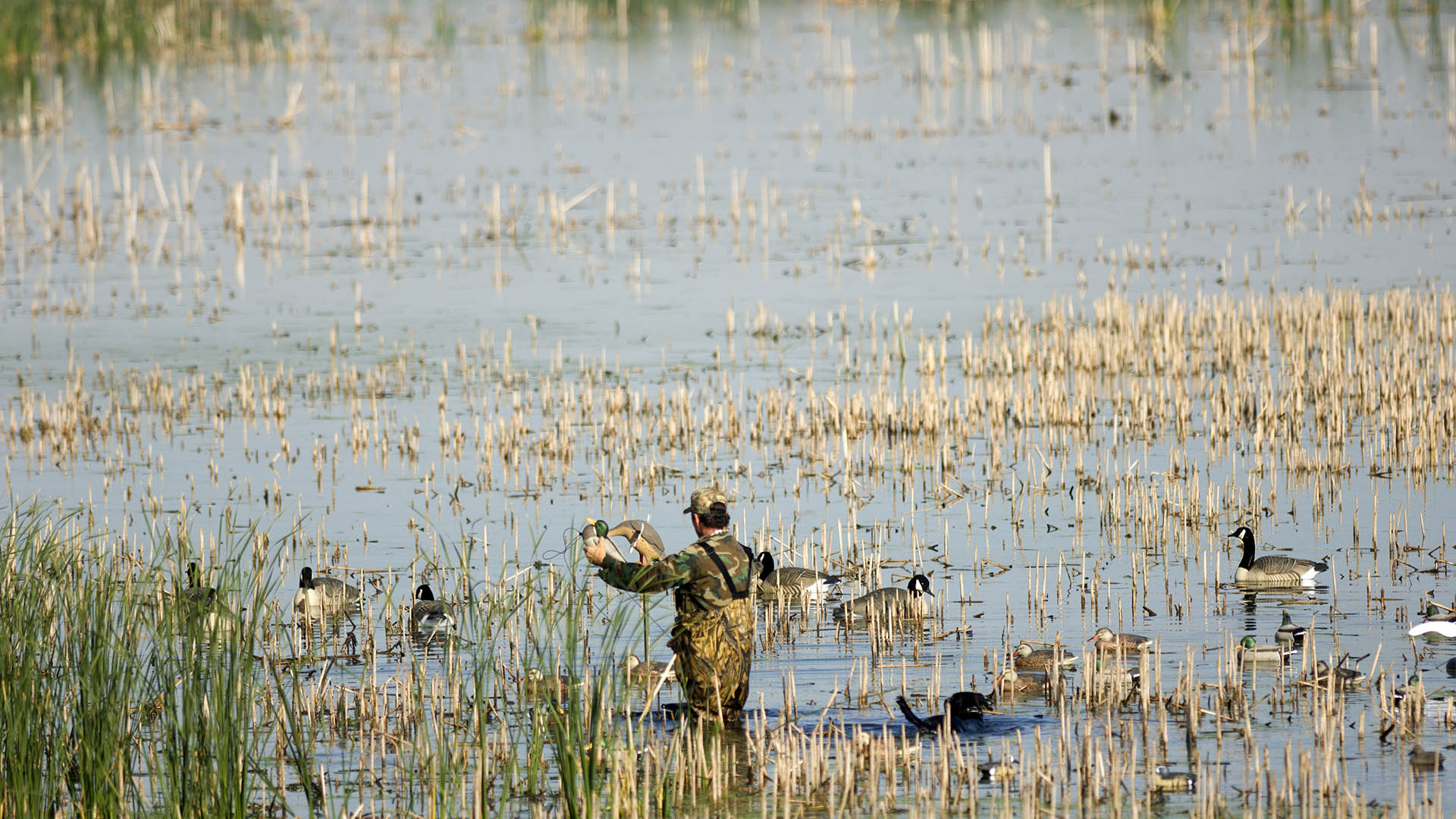
On your last hunting venture the woods were alive with turkeys. Gobblers sounded off on the roost in every direction and you were lucky enough to work a bird or two. But then things completely changed. Instead of gobbles, you near nothing but the distant cawing of crows and maybe a few songbirds. The gobblers that were so vocal last time have shut up.
So what’s your next move? Many hunters head for their trucks, assuming the birds are dead, gone or simply unkillable. A few, like Knight & Hale special promotions coordinator Jim Strelec understand that any number of factors influence gobbling activity. Instead of throwing in the towel and coming back another day, Strelec hunts because he understands that a day in the woods is better than a day on the couch. Even more important, he knows that silent woods aren’t necessarily void of gobblers. In fact, many gobblers never utter a peep on a typical day. The birds are there, but they just aren’t talking.
“They might have been hunted hard, they might be with hens or it just could be one of those days where they don’t gobble for whatever reason,” said Strelec. “Just because they aren’t talking doesn’t mean you can’t kill one.”
In other words, that silence is just a curve-ball in the standard turkey hunting game, a new challenge on an already-challenging sport. Pulling a gobbler into gun range when he isn’t talking may be difficult, but it’s hardly impossible.
Run and Gun
Strelec will first get aggressive and try to trick a gobbler into giving away his location, if only once. A single gobble is all Strelec needs to hear. In fact, those silent birds that offer just one gobble are often the easiest to kill, he said.
“I’ll try a gobble call early in the morning. A lot of times, they can’t resist a challenge, so they’ll gobble back,” he said.
If that doesn’t draw a reply, something like an owl or crow call might “shock” a gobbler into gobbling. Both can work, but in heavily hunted woods they can turn off gobblers as much as they might coax one into giving away his location.
Instead of the standard crow call most hunters use, Strelec tries to mimic the pleading and aggressive calls of a crow dive-bombing an owl. It’s louder and faster than a normal fly-over call and it can be the ticket to making a gobbler talk. Crow calling may not work on the shyest birds, but it certainly can’t hurt, especially if it sounds realistic. Instead of simply blowing into a closed-reed call as you might blow into a duck call, put a little rasp into it as if you were clearing your throat as you blow.
Sit, Stay, Be Quiet
When your best crow calls, gobbles and yelps fail to strike a real gobbler, it’s time to shift gears and take a completely different approach. Instead of walking and calling, Strelec will search for obvious turkey sign like scratchings, tracks or droppings and sit down and get comfortable. Then he pulls out a call and offers a few soft yelps or clucks. He’s not concerned if he doesn’t get an answer right away. A gobbler that didn’t respond to more aggressive calls probably won’t respond to softer calls, either. Or at least he may not gobble. That doesn’t mean he isn’t interested, though. The urge to breed is what controls a tom’s life this time of year and any hen in his territory will at least grab his attention.
Strelec will sit tight for an hour, even longer if he’s confident he’s in the right neighborhood, but he’s careful not to overcall. Hens tend to talk less as the morning fades into afternoon, so loud, aggressive hen calling may not sound realistic to a gobbler, especially if he’s heard it a lot. Strelec will instead offer an occasional series of yelps or just a cluck now and then. If there’s one within hearing range, he just might slip in for a closer look.
Gun Up, Eyes Open
Silent gobblers can be the most difficult birds to kill, not because they aren’t interested, but because you just don’t know when they might show up. That’s why it’s critical to stay alert and ready, even when your confidence level sags.
“I keep my gun on my knee and I’m constantly listening for the sound of footsteps in the leaves,” said Strelec. “I’m also looking. I’ve had many birds come in from where I didn’t expect them to come from, but I saw them before they saw me, so I was able to get turned and ready.”
Fielder’s Choice
Turkey sign isn’t always abundant in the spring, at least not scratchings. As the seasons change, so do food sources, and birds that raked the forest in search of acorns and other buried treasure often spend more time in fields chasing bugs and eating tender young greens. That’s why it’s smart to guard a field. Not only do hens feed in fields, gobblers love to strut in them. The hard part, however, is getting to the field first.
“If you aren’t hearing anything at first light, consider going straight to a field and setting up a decoy. It may take a while for a bird to show up, but if you can get there before he does, you have a good chance of killing him,” said Strelec, adding that a Carry Lite Pretty Boy gobbler and Pretty Hen decoy combination can draw birds from across a large field.
He’ll also head for a field when it’s raining because turkeys spend hours feeding and strutting in fields during a light spring shower. It may not seem like a fun way to spend a Saturday, but sitting in the rain during turkey season sure beats sitting at home.




































